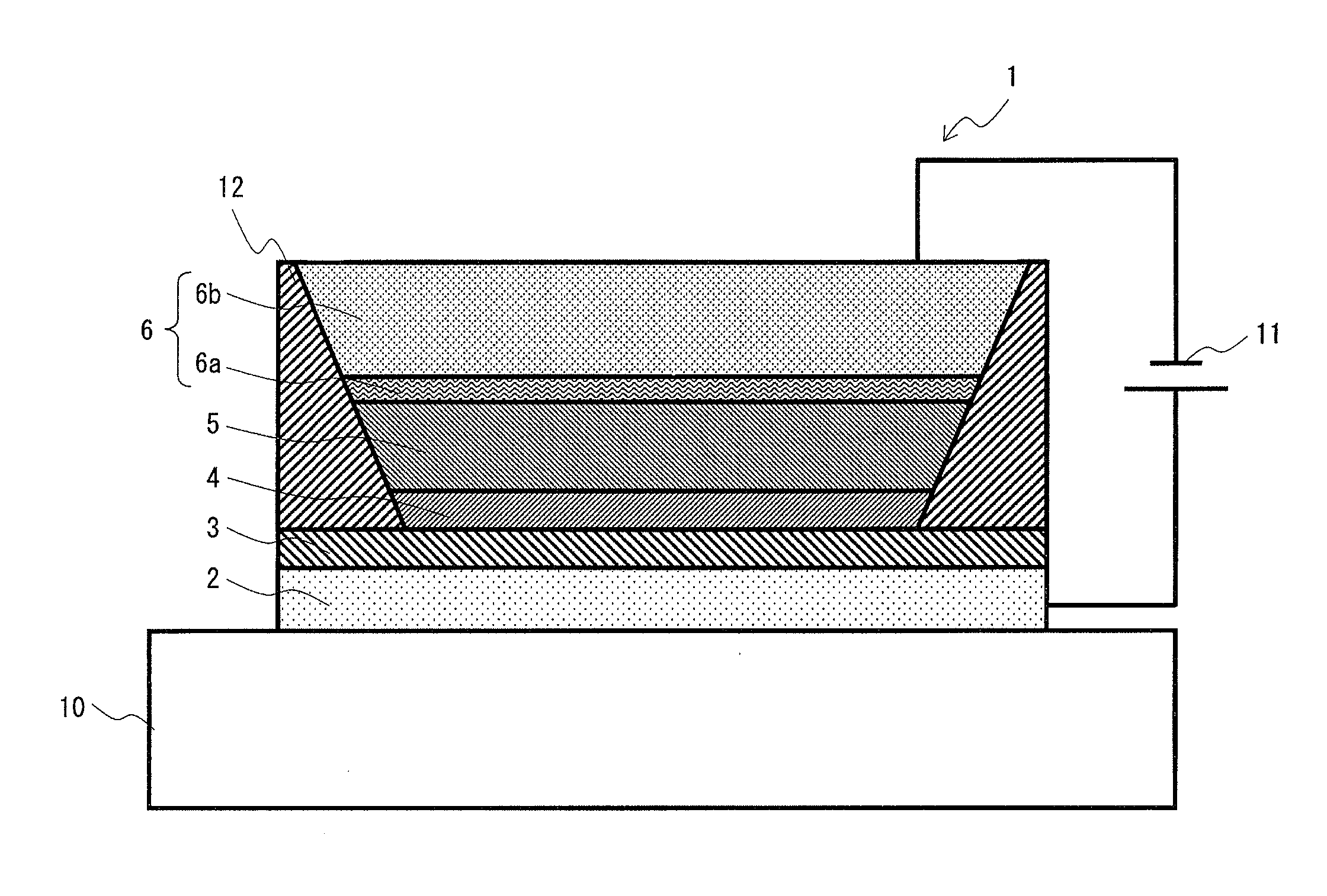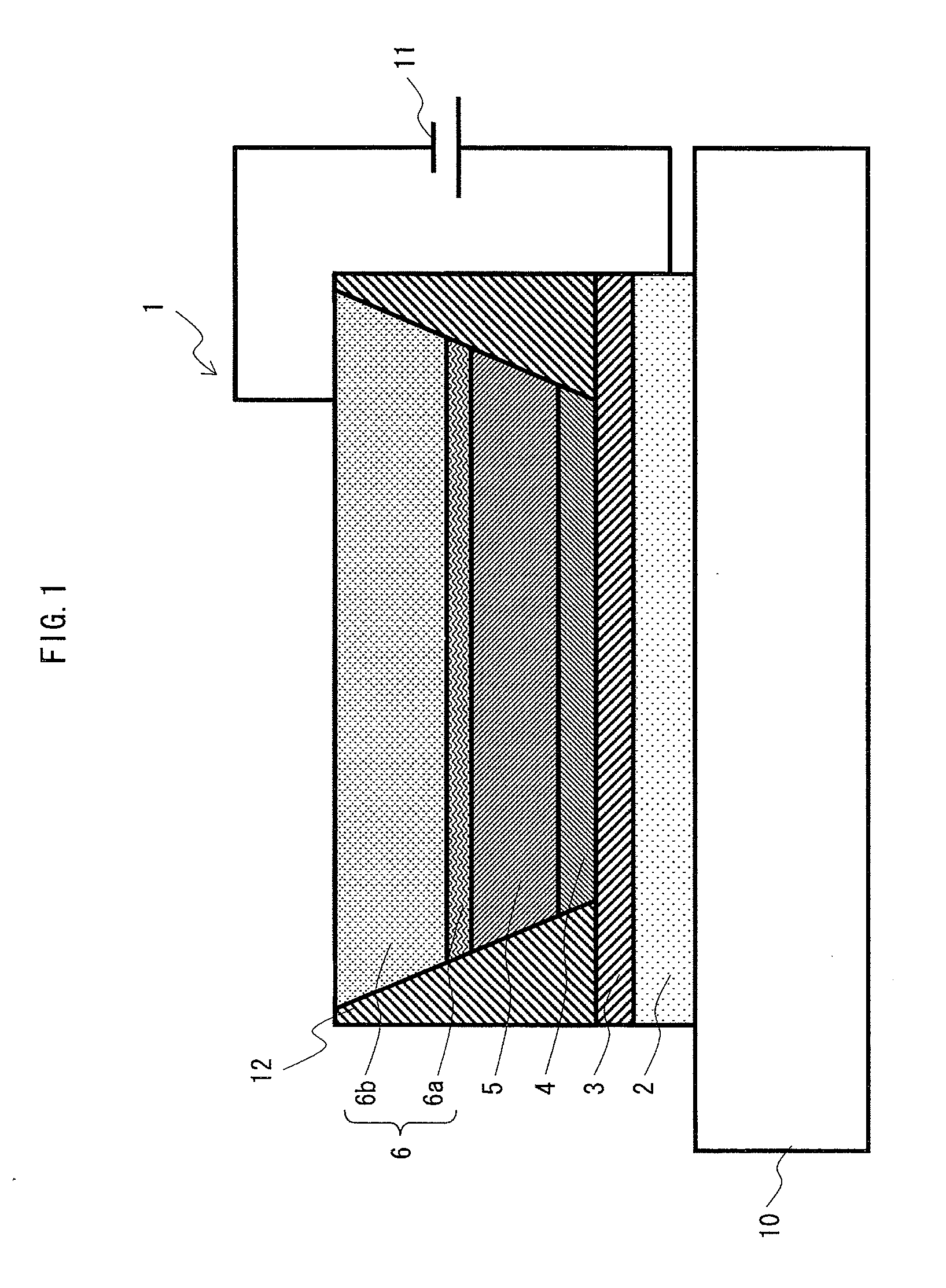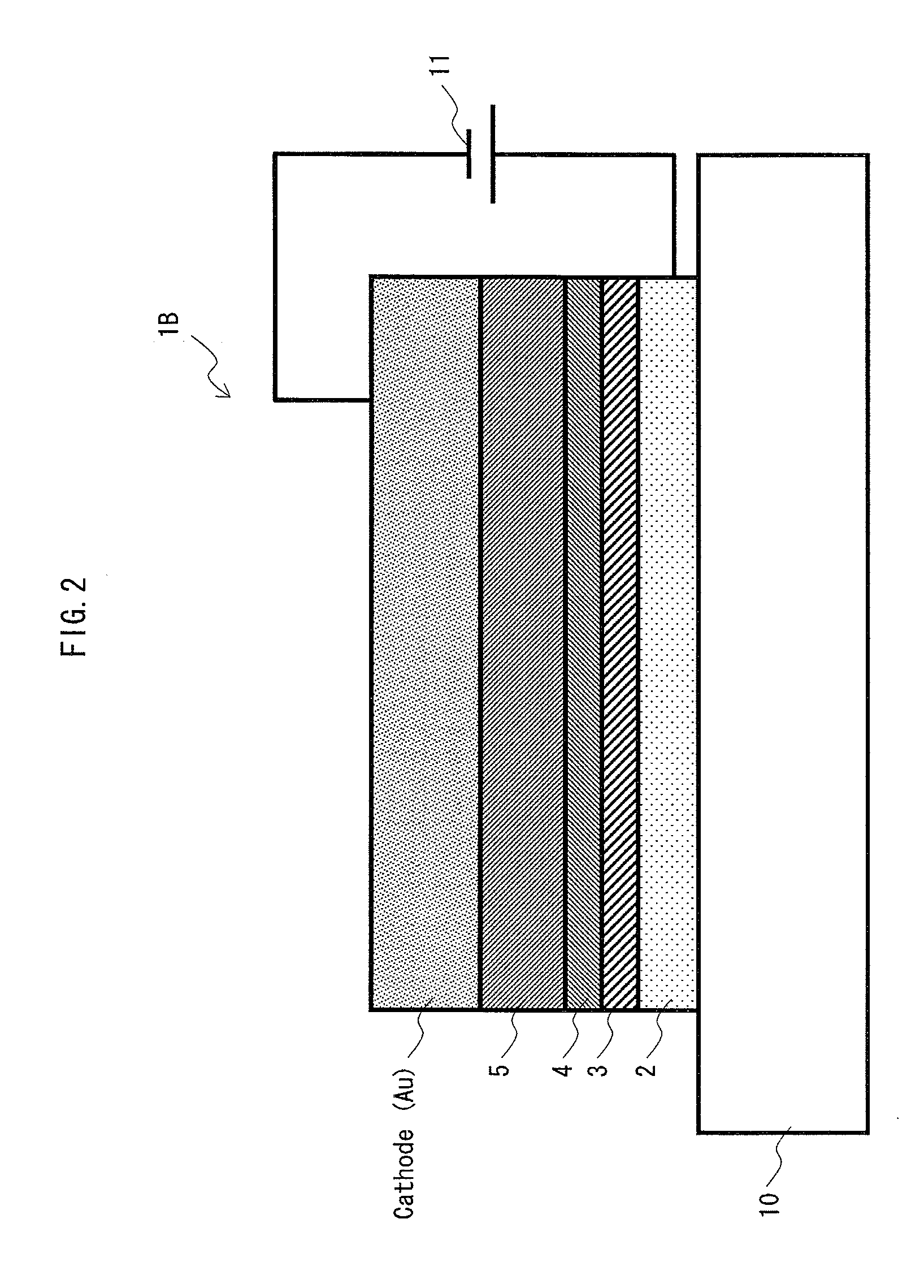Organic el element
a light-emitting element and organic technology, applied in the field of organic electricfield light-emitting elements, can solve the problems of easy deterioration or decomposition, difficulty in overcoming similar problems, and difficulty in use, and achieve excellent light-emitting efficiency, excellent hole injection efficiency, and high chemical stability
- Summary
- Abstract
- Description
- Claims
- Application Information
AI Technical Summary
Benefits of technology
Problems solved by technology
Method used
Image
Examples
embodiment
Structure of Organic EL Element
[0058]FIG. 1 is a schematic cross-sectional view illustrating the structure of an organic EL element 1 pertaining to the embodiment.
[0059]The organic EL element 1 is an application-type organic EL element, which is characterized in that a functional layer is applied by a wet process in the manufacturing thereof. The organic EL element 1 includes: a hole injection layer 3; various functional layers (a buffer layer 4 and a light-emitting layer 5, in this case); and a pair of electrodes composed of an anode 2 and a cathode 6. The hole injection layer 3 and the functional layers are disposed one on top of the other, and are disposed between the pair of electrodes. Each of the functional layers contains functional material having a predetermined function.
[0060]More specifically, the organic EL element 1 includes, as illustrated in FIG. 1, the anode 2, the hole injection layer 3, the buffer layer 4, the light-emitting layer 5, and the cathode 6 (composed of ...
PUM
 Login to View More
Login to View More Abstract
Description
Claims
Application Information
 Login to View More
Login to View More - R&D
- Intellectual Property
- Life Sciences
- Materials
- Tech Scout
- Unparalleled Data Quality
- Higher Quality Content
- 60% Fewer Hallucinations
Browse by: Latest US Patents, China's latest patents, Technical Efficacy Thesaurus, Application Domain, Technology Topic, Popular Technical Reports.
© 2025 PatSnap. All rights reserved.Legal|Privacy policy|Modern Slavery Act Transparency Statement|Sitemap|About US| Contact US: help@patsnap.com



